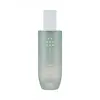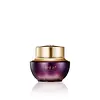What's inside
What's inside
 Key Ingredients
Key Ingredients

 Benefits
Benefits

 Concerns
Concerns

 Ingredients Side-by-side
Ingredients Side-by-side

Water
Skin ConditioningCyclopentasiloxane
EmollientAlcohol Denat.
AntimicrobialDipropylene Glycol
HumectantGlycerin
HumectantPentaerythrityl Tetraethylhexanoate
Emollient1,2-Hexanediol
Skin ConditioningSorbitol
HumectantDimethicone
EmollientHydrogenated Polydecene
EmollientHouttuynia Cordata Extract
Skin ConditioningMelia Azadirachta Leaf Extract
Skin ConditioningNymphaea Alba Flower Extract
Skin ConditioningCI 77491
Cosmetic ColorantMelia Azadirachta Flower Extract
Skin ConditioningRoyal Jelly
Honey
HumectantArtemisia Capillaris Extract
Coccinia Indica Fruit Extract
Skin ConditioningMineral Salts
Skin ConditioningAloe Barbadensis Flower Extract
EmollientSolanum Melongena Fruit Extract
Skin ConditioningAloe Barbadensis Leaf Juice Powder
Skin ConditioningCarthamus Tinctorius Flower Extract
Skin ConditioningCarthamus Tinctorius Seed Extract
Skin ConditioningLycium Chinense Fruit Extract
AntioxidantPanax Ginseng Root Extract
EmollientSimmondsia Chinensis Seed Oil
EmollientCorallina Officinalis Extract
Skin ConditioningCurcuma Longa Root Extract
MaskingOcimum Sanctum Leaf Extract
Skin ConditioningButylene Glycol
HumectantSilica
AbrasiveMethyl Glucose Sesquistearate
EmollientAcrylates/C10-30 Alkyl Acrylate Crosspolymer
Emulsion StabilisingCI 77891
Cosmetic ColorantTromethamine
BufferingSynthetic Fluorphlogopite
PEG/PPG-17/6 Copolymer
SolventPEG-150
HumectantMethylpropanediol
SolventXanthan Gum
EmulsifyingTrisodium EDTA
Parfum
MaskingLimonene
PerfumingLinalool
PerfumingWater, Cyclopentasiloxane, Alcohol Denat., Dipropylene Glycol, Glycerin, Pentaerythrityl Tetraethylhexanoate, 1,2-Hexanediol, Sorbitol, Dimethicone, Hydrogenated Polydecene, Houttuynia Cordata Extract, Melia Azadirachta Leaf Extract, Nymphaea Alba Flower Extract, CI 77491, Melia Azadirachta Flower Extract, Royal Jelly, Honey, Artemisia Capillaris Extract, Coccinia Indica Fruit Extract, Mineral Salts, Aloe Barbadensis Flower Extract, Solanum Melongena Fruit Extract, Aloe Barbadensis Leaf Juice Powder, Carthamus Tinctorius Flower Extract, Carthamus Tinctorius Seed Extract, Lycium Chinense Fruit Extract, Panax Ginseng Root Extract, Simmondsia Chinensis Seed Oil, Corallina Officinalis Extract, Curcuma Longa Root Extract, Ocimum Sanctum Leaf Extract, Butylene Glycol, Silica, Methyl Glucose Sesquistearate, Acrylates/C10-30 Alkyl Acrylate Crosspolymer, CI 77891, Tromethamine, Synthetic Fluorphlogopite, PEG/PPG-17/6 Copolymer, PEG-150, Methylpropanediol, Xanthan Gum, Trisodium EDTA, Parfum, Limonene, Linalool
Water
Skin ConditioningGlycerin
HumectantCaprylic/Capric Triglyceride
MaskingPropylene Glycol
HumectantIsocetyl Myristate
EmollientGlyceryl Stearate
EmollientButyrospermum Parkii Butter
Skin ConditioningNiacinamide
SmoothingButylene Glycol
HumectantStearyl Alcohol
EmollientDipentaerythrityl Pentaacrylate
Methyl Hydroxystearate
EmollientTea-Rosinate
CleansingPEG-100 Stearate
1,2-Hexanediol
Skin ConditioningC14-22 Alcohols
Emulsion StabilisingPanthenol
Skin ConditioningPerfluorobutylethyl Dimethicone
HumectantPolyglyceryl-3 Methylglucose Distearate
EmulsifyingPanax Ginseng Root
EmollientPhellinus Linteus Extract
Skin ConditioningGanoderma Lucidum Extract
Skin ProtectingPaeonia Suffruticosa Branch/Flower/Leaf Extract
Skin ConditioningPaeonia Suffruticosa Root Extract
Skin ProtectingPolygonum Multiflorum Root Extract
Skin ConditioningPoria Cocos Sclerotium Extract
AstringentPlatycodon Grandiflorus Root Extract
AntioxidantRehmannia Glutinosa Root Extract
Skin ConditioningAngelica Gigas Extract
Skin ConditioningTrichosanthes Kirilowii Root Extract
Skin ProtectingLycium Chinense Fruit Extract
AntioxidantCarthamus Tinctorius Seed Extract
Skin ConditioningTuber Magnatum Extract
Skin ConditioningVelvet Extract
HumectantCnidium Officinale Root Extract
Skin ConditioningCuscuta Japonica Seed Extract
Skin ConditioningAngelica Tenuissima Root Extract
Skin ConditioningCeratonia Siliqua Fruit Extract
MaskingPhaseolus Radiatus Seed Extract
Skin ConditioningTheobroma Cacao Seed Extract
AntioxidantDipotassium Glycyrrhizate
HumectantCeramide NP
Skin ConditioningMacadamia Ternifolia Seed Oil
EmollientCholesterol
EmollientDextrin
AbsorbentAdenosine
Skin ConditioningHydrogenated Lecithin
EmulsifyingHydrogenated Olive Oil Unsaponifiables
EmollientGlycereth-20
HumectantCetearyl Olivate
Coconut Oil Methylpropanediol Esters
EmollientSorbitan Stearate
EmulsifyingC12-20 Alkyl Glucoside
EmulsifyingArachidyl Glucoside
EmulsifyingSorbitan Olivate
EmulsifyingDimethicone
EmollientTriethylhexanoin
MaskingPEG-10 Rapeseed Sterol
CleansingStearic Acid
CleansingCarbomer
Emulsion StabilisingAcrylates/C10-30 Alkyl Acrylate Crosspolymer
Emulsion StabilisingAmmonium Acryloyldimethyltaurate/Vp Copolymer
Trisodium EDTA
Tromethamine
BufferingParfum
MaskingWater, Glycerin, Caprylic/Capric Triglyceride, Propylene Glycol, Isocetyl Myristate, Glyceryl Stearate, Butyrospermum Parkii Butter, Niacinamide, Butylene Glycol, Stearyl Alcohol, Dipentaerythrityl Pentaacrylate, Methyl Hydroxystearate, Tea-Rosinate, PEG-100 Stearate, 1,2-Hexanediol, C14-22 Alcohols, Panthenol, Perfluorobutylethyl Dimethicone, Polyglyceryl-3 Methylglucose Distearate, Panax Ginseng Root, Phellinus Linteus Extract, Ganoderma Lucidum Extract, Paeonia Suffruticosa Branch/Flower/Leaf Extract, Paeonia Suffruticosa Root Extract, Polygonum Multiflorum Root Extract, Poria Cocos Sclerotium Extract, Platycodon Grandiflorus Root Extract, Rehmannia Glutinosa Root Extract, Angelica Gigas Extract, Trichosanthes Kirilowii Root Extract, Lycium Chinense Fruit Extract, Carthamus Tinctorius Seed Extract, Tuber Magnatum Extract, Velvet Extract, Cnidium Officinale Root Extract, Cuscuta Japonica Seed Extract, Angelica Tenuissima Root Extract, Ceratonia Siliqua Fruit Extract, Phaseolus Radiatus Seed Extract, Theobroma Cacao Seed Extract, Dipotassium Glycyrrhizate, Ceramide NP, Macadamia Ternifolia Seed Oil, Cholesterol, Dextrin, Adenosine, Hydrogenated Lecithin, Hydrogenated Olive Oil Unsaponifiables, Glycereth-20, Cetearyl Olivate, Coconut Oil Methylpropanediol Esters, Sorbitan Stearate, C12-20 Alkyl Glucoside, Arachidyl Glucoside, Sorbitan Olivate, Dimethicone, Triethylhexanoin, PEG-10 Rapeseed Sterol, Stearic Acid, Carbomer, Acrylates/C10-30 Alkyl Acrylate Crosspolymer, Ammonium Acryloyldimethyltaurate/Vp Copolymer, Trisodium EDTA, Tromethamine, Parfum
Ingredients Explained
These ingredients are found in both products.
Ingredients higher up in an ingredient list are typically present in a larger amount.
1,2-Hexanediol is a synthetic liquid and another multi-functional powerhouse.
It is a:
- Humectant, drawing moisture into the skin
- Emollient, helping to soften skin
- Solvent, dispersing and stabilizing formulas
- Preservative booster, enhancing the antimicrobial activity of other preservatives
Acrylates/C10-30 Alkyl Acrylate Crosspolymer is a synthetic polymer. It is used to thicken and improve the texture of products. Due to its properties, it can prevent water and oil ingredients from separating.
Butylene Glycol (or BG) is used within cosmetic products for a few different reasons:
Overall, Butylene Glycol is a safe and well-rounded ingredient that works well with other ingredients.
Though this ingredient works well with most skin types, some people with sensitive skin may experience a reaction such as allergic rashes, closed comedones, or itchiness.
Learn more about Butylene GlycolCarthamus Tinctorius Seed Extract comes from the safflower seed.
Safflower seed oil contains a high percentage of linoleic acid and oleic acid. It also contains Vitamin E. These three components are effective moisturizers.
Dimethicone is a type of synthetic silicone created from natural materials such as quartz.
What it does:
Dimethicone comes in different viscosities:
Depending on the viscosity, dimethicone has different properties.
Ingredients lists don't always show which type is used, so we recommend reaching out to the brand if you have questions about the viscosity.
This ingredient is unlikely to cause irritation because it does not get absorbed into skin. However, people with silicone allergies should be careful about using this ingredient.
Note: Dimethicone may contribute to pilling. This is because it is not oil or water soluble, so pilling may occur when layered with products. When mixed with heavy oils in a formula, the outcome is also quite greasy.
Learn more about DimethiconeGlycerin is already naturally found in your skin. It helps moisturize and protect your skin.
A study from 2016 found glycerin to be more effective as a humectant than AHAs and hyaluronic acid.
As a humectant, it helps the skin stay hydrated by pulling moisture to your skin. The low molecular weight of glycerin allows it to pull moisture into the deeper layers of your skin.
Hydrated skin improves your skin barrier; Your skin barrier helps protect against irritants and bacteria.
Glycerin has also been found to have antimicrobial and antiviral properties. Due to these properties, glycerin is often used in wound and burn treatments.
In cosmetics, glycerin is usually derived from plants such as soybean or palm. However, it can also be sourced from animals, such as tallow or animal fat.
This ingredient is organic, colorless, odorless, and non-toxic.
Glycerin is the name for this ingredient in American English. British English uses Glycerol/Glycerine.
Learn more about GlycerinLycium Chinense Fruit Extract comes from a type of goji berry plant.
Goji berries contain polysaccharides, carotenoids and flavonoids. These give it antioxidant properties that protect your skin from free-radical molecules.
Polysaccharides help hydrate the top layer of skin due to its ability to mimic natural carbohydrates.
Learn more about Lycium Chinense Fruit ExtractParfum is a catch-all term for an ingredient or more that is used to give a scent to products.
Also called "fragrance", this ingredient can be a blend of hundreds of chemicals or plant oils. This means every product with "fragrance" or "parfum" in the ingredients list is a different mixture.
For instance, Habanolide is a proprietary trade name for a specific aroma chemical. When used as a fragrance ingredient in cosmetics, most aroma chemicals fall under the broad labeling category of “FRAGRANCE” or “PARFUM” according to EU and US regulations.
The term 'parfum' or 'fragrance' is not regulated in many countries. In many cases, it is up to the brand to define this term.
For instance, many brands choose to label themselves as "fragrance-free" because they are not using synthetic fragrances. However, their products may still contain ingredients such as essential oils that are considered a fragrance by INCI standards.
One example is Calendula flower extract. Calendula is an essential oil that still imparts a scent or 'fragrance'.
Depending on the blend, the ingredients in the mixture can cause allergies and sensitivities on the skin. Some ingredients that are known EU allergens include linalool and citronellol.
Parfum can also be used to mask or cover an unpleasant scent.
The bottom line is: not all fragrances/parfum/ingredients are created equally. If you are worried about fragrances, we recommend taking a closer look at an ingredient. And of course, we always recommend speaking with a professional.
Learn more about ParfumWe don't have a description for Trisodium EDTA yet.
Tromethamine helps balance the pH and improve the texture of a product. It is synthetically created.
As an emulsifier, Tromethamine prevents oil and water ingredients from separating. This helps stabilize the product and elongate a product's shelf life. Tromethamine also makes a product thicker.
Tromethamine helps balance the pH level of a product. Normal pH level of skin is slightly acidic (~4.75-5.5). The acidity of our skin is maintained by our glands and skin biome. Being slightly acidic allows our skin to create an "acid mantle". This acid mantle is a thin barrier that protects our skin from bacteria and contaminants.
Oral Tromethanmine is an anti-inflammatory drug but plays the role of masking, adding fragrance, and/or balancing pH in skincare.
1,3-Propanediol, 2-amino-2-(hydroxymethyl)-
Learn more about TromethamineWater. It's the most common cosmetic ingredient of all. You'll usually see it at the top of ingredient lists, meaning that it makes up the largest part of the product.
So why is it so popular? Water most often acts as a solvent - this means that it helps dissolve other ingredients into the formulation.
You'll also recognize water as that liquid we all need to stay alive. If you see this, drink a glass of water. Stay hydrated!
Learn more about Water